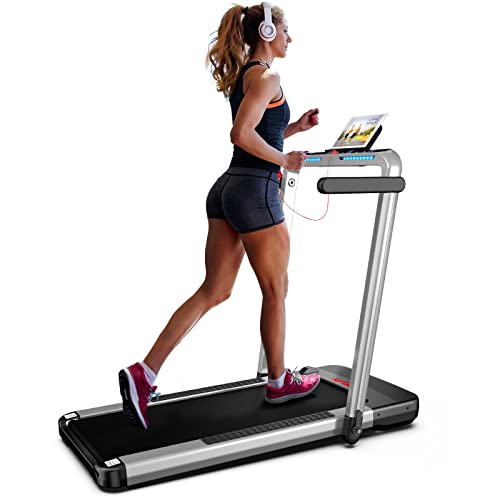treadmills-electric8308
treadmills-electric8308
The Reasons Walking Machine Is Harder Than You Think
The Walking Machine: A Comprehensive Guide to Your Fitness Companion
In today’s fast-paced world, where time is a luxury, preserving a consistent workout routine can be a challenge. For many, a walking machine– typically known as a treadmill– works as an ideal fitness companion. This post offers an extensive take a look at walking machines, including their advantages, types, upkeep tips, and regularly asked concerns.
Why Choose a Walking Machine?
Walking machines provide a practical and effective method to incorporate cardiovascular workout into everyday life. Here are several crucial benefits:
- Convenience: Walking machines allow people to exercise anytime, despite climate condition or time constraints. They are perfect for hectic schedules.
- Flexibility: Users can walk, jog, or perform at their own speed and strength.
- Safety: Walking machines provide a lower danger of injury compared to outdoor walking or running, especially for newbies or those recovering from injuries.
- Tracking Progress: Many treadmills included integrated monitors that track metrics like speed, range, and calories burned.
Kinds Of Walking Machines
When considering a walking machine, it’s important to choose the ideal type based on private fitness goals and area restrictions. Below are the main kinds of walking machines:
| Type | Description |
|---|---|
| Manual Treadmills | These machines do not have a motor, and users require to stroll or run to turn the belt. |
| Electric Treadmills | Powered by an electric motor, enabling users to set the speed and incline effortlessly. |
| Folding Treadmills | Developed for easy storage, these treadmills can be folded when not in use. |
| Desk Treadmills | Suitable for a double work and workout environment, these compact machines allow walking while working. |
| Incline Trainers | These enable users to simulate uphill walking, improving workout intensity and calorie burn. |
Picking the Right Walking Machine
Choosing the ideal walking machine can substantially affect motivation and efficiency. Here are some elements to think about:
Key Features to Look For
- Motor Power: An effective motor makes sure a smooth and constant workout. For periodic walkers, a 1.5 HP motor is generally sufficient; for heavier use, search for 3.0 HP and above.
- Belt Size: A broader and longer belt offers more space saving treadmill for a comfy stride. Standard sizes range from 16 inches broad and 50 inches long.
- Incline Options: Adjustable slope settings can imitate walking or running uphill, increasing the intensity of the workout.
- Shock Absorption: Good shock absorption lowers the risk of joint injuries and enhances convenience.
- Console Features: Look for integrated exercises, heart rate monitors, and connection functions like Bluetooth for a more appealing experience.
Spending plan Considerations
Walking machines been available in a broad variety of prices, depending on functions and building and construction quality. Here’s a rough spending plan breakdown:
| Price Range | Functions |
|---|---|
| Under ₤ 300 | Basic handbook or small electric treadmills with restricted features. |
| ₤ 300 – ₤ 700 | More advanced electric treadmills with incline, medium power motors, and better service warranties. |
| ₤ 700 – ₤ 1500 | High-quality electric treadmills with bigger built-in display screens, extensive features, and service warranties. |
| ₤ 1500 and above | High-end designs providing advanced innovation, functions, and durable building and construction for serious fitness enthusiasts. |
Upkeep Tips for Your Walking Machine
To make sure durability and optimal performance of a walking machine, think about the following upkeep pointers:
- Regular Cleaning: Dust and sweat can build up on the machine and the belt. Clean down the surface areas and tidy the belt frequently.
- Lubrication: Depending on the design, lubing the running belt periodically can avoid wear and tear. Check the maker standards for suggested lubrication schedules.
- Inspection: Periodically check the machine for loose screws or worn parts. Tighten up and change as required.
- Calibration: Occasionally, examine the calibration of your machine’s metrics to ensure they supply accurate information.
- Correct Use: Follow the manufacturer’s recommendations for weight limitations and functional standards.
Frequently Asked Questions About Walking Machines
1. Are walking machines a great workout?
Yes, walking machines provide an exceptional cardiovascular workout, can assist with weight reduction, and improve overall health.
2. How typically should I utilize a walking machine?
Go for at least 150 minutes of moderate-intensity aerobic activity each week, which can quickly be accomplished with regular sessions on a walking machine.
3. Can I slim down on a walking machine?
Yes, integrating a walking machine routine into a healthy diet can promote weight loss, especially if integrated with intervals and incline training.

4. Is it safe for elders to use a walking machine?
Yes, walking machines can be safe for senior citizens with low-impact settings and safety functions like hand rails. Nevertheless, individuals need to speak with their doctor before starting any exercise program.
5. What’s the difference between a treadmill and a walking machine?
The term “walking machine” normally refers to a treadmill meant for walking, while “treadmill” can refer to machines used for different intensities, including running.
With their versatility and convenience, walking machines can significantly improve one’s physical fitness journey. By carefully selecting the best type, making sure proper upkeep, and including different exercise strategies, users can maximize their walking machine’s benefits. Similar to any exercise routine, consistency is crucial to achieving lasting fitness outcomes.


